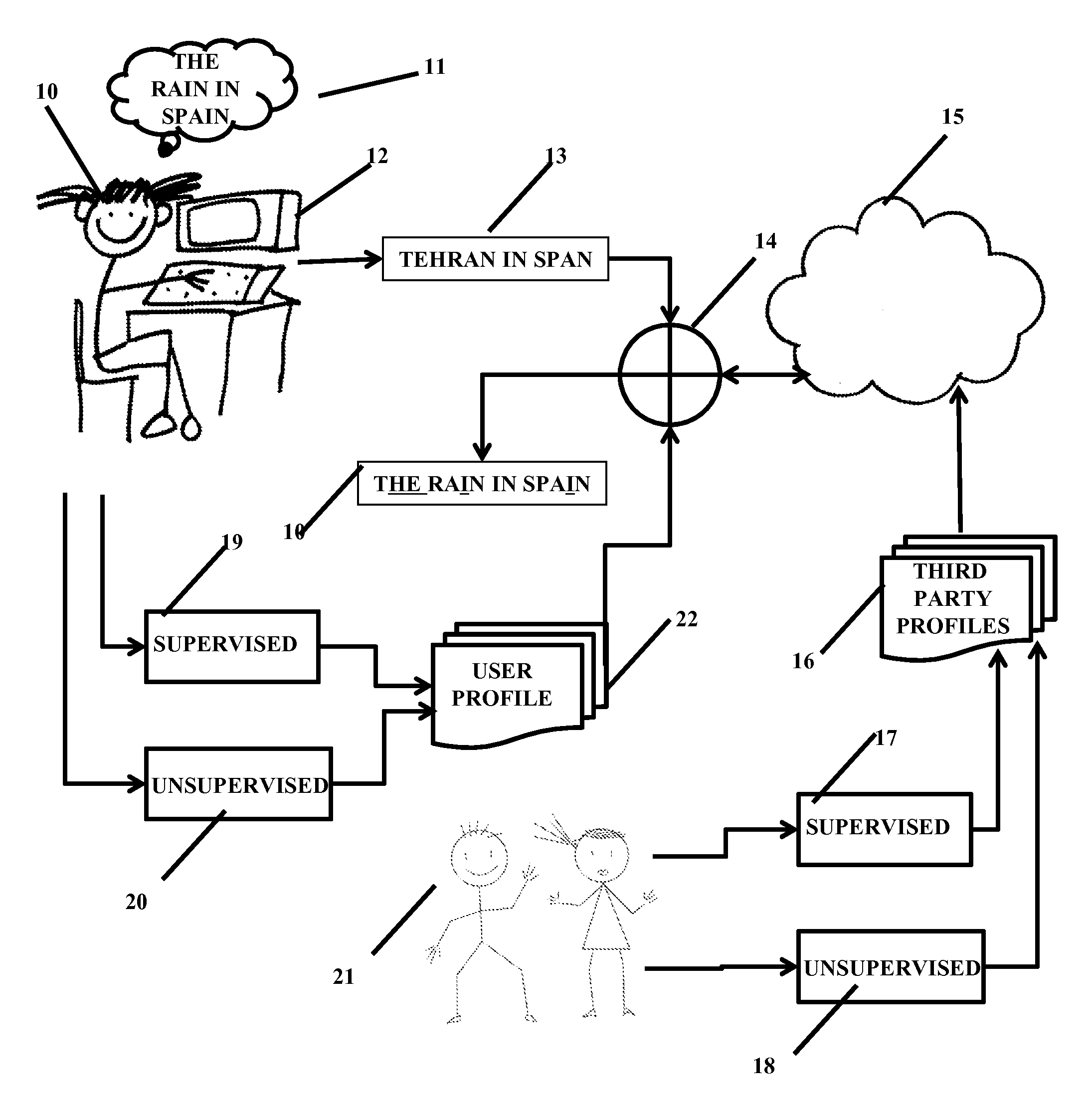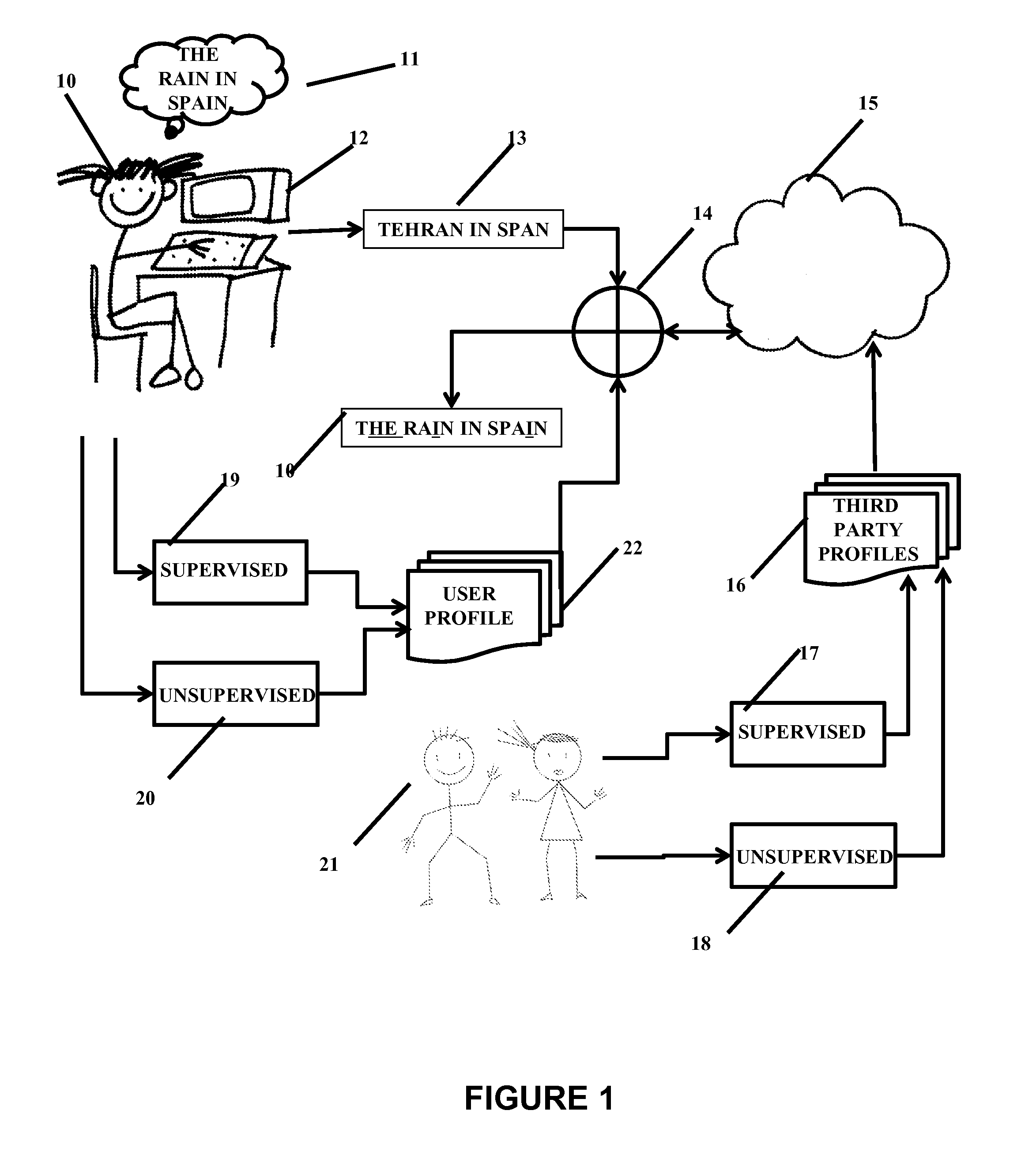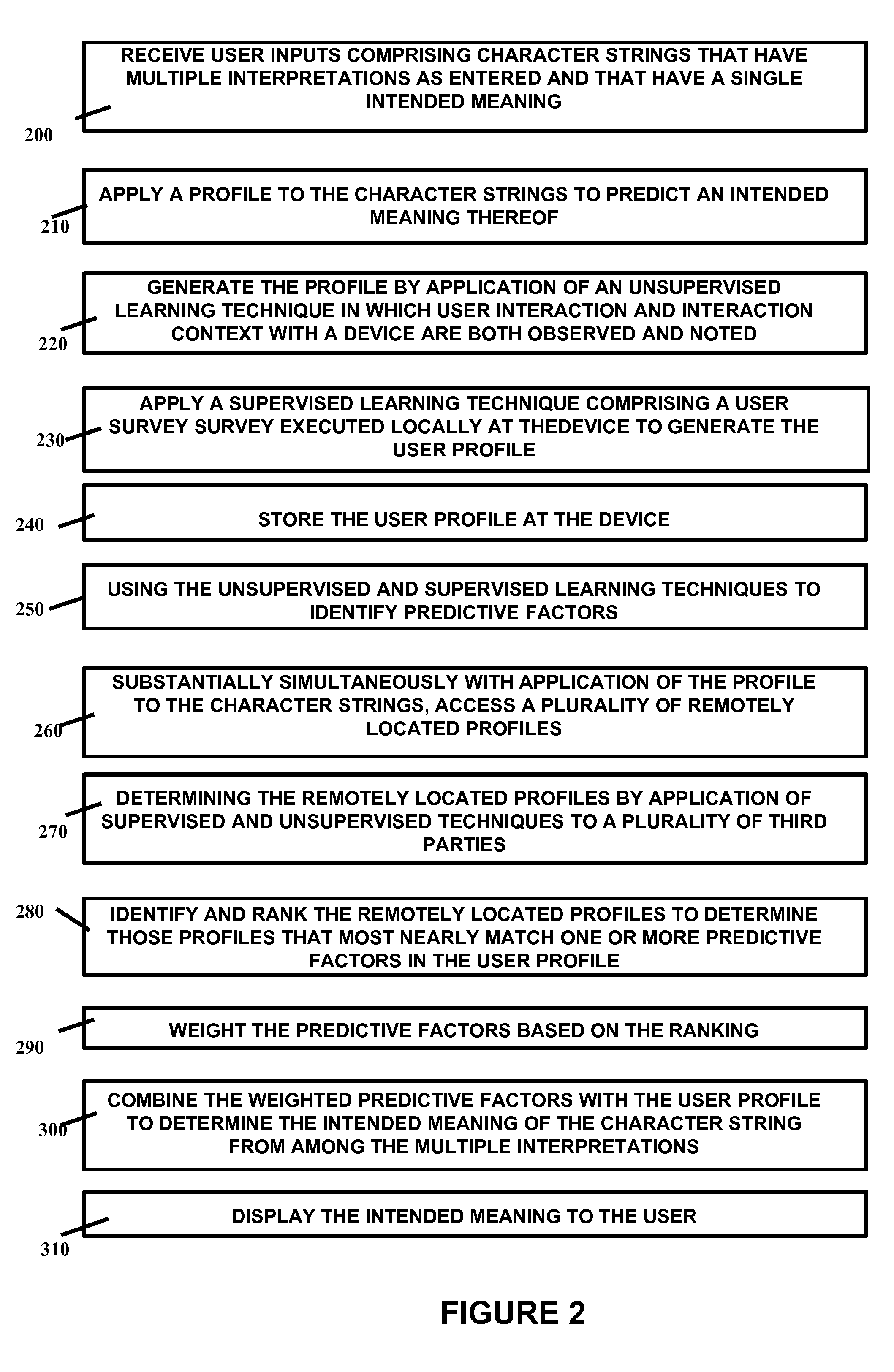Multi-dimensional information entry prediction
a prediction and information technology, applied in the field of information entry, can solve the problems of inconvenient typing of words, mixed results as to whether or not word prediction actually increases the output speed, and the need of training data sets
- Summary
- Abstract
- Description
- Claims
- Application Information
AI Technical Summary
Benefits of technology
Problems solved by technology
Method used
Image
Examples
Embodiment Construction
[0036]An embodiment of the invention comprises an apparatus and / or computer implemented method that predicts intended meanings in real time from character strings that are input by a user and that have multiple interpretations. A processor receives a plurality of user inputs from an input device, such as a keyboard, touch or stylus text entry device, gesture responsive device, voice, or combination thereof. The user inputs initially comprise or are converted to character strings that have multiple interpretations as entered and that have a single intended meaning.
[0037]The processor applies a profile to the character strings to predict the intended meaning thereof. The processor generates the profile by application of an unsupervised learning technique in which user interaction and interaction context with the device are both observed and noted, and by application of a supervised learning technique comprising a processor implemented user survey, where the processor executes the surv...
PUM
 Login to View More
Login to View More Abstract
Description
Claims
Application Information
 Login to View More
Login to View More - R&D
- Intellectual Property
- Life Sciences
- Materials
- Tech Scout
- Unparalleled Data Quality
- Higher Quality Content
- 60% Fewer Hallucinations
Browse by: Latest US Patents, China's latest patents, Technical Efficacy Thesaurus, Application Domain, Technology Topic, Popular Technical Reports.
© 2025 PatSnap. All rights reserved.Legal|Privacy policy|Modern Slavery Act Transparency Statement|Sitemap|About US| Contact US: help@patsnap.com



